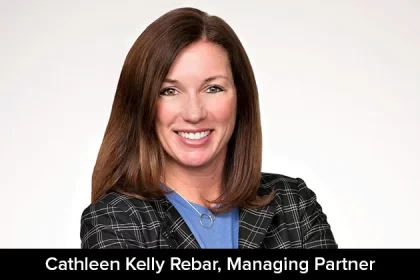In today’s business landscape, leadership isn’t just about strategy or skill — it’s about presence. Whether you’re pitching to investors, leading town halls, or simply showing up online, how you feel in your skin has a quiet but measurable impact on how you’re perceived. And for many leaders, appearance-led confidence still shapes that equation more than they’d like to admit.
As more executives become aware of the connection between self-image and influence, subtle interventions like hair transplants are becoming part of a broader conversation around sustainable leadership, mental health, and personal branding.
Beyond the Boardroom: Why Confidence Is a Business Tool
Business leaders are always “on”: from Zoom meetings and keynote stages to headshots and media appearances. This visibility creates a different kind of leadership pressure — not just to perform, but to project confidence.
And while confidence is often thought of as internal, many executives know the truth: how you look can deeply affect how you feel.
Small shifts in appearance — like hair thinning, posture changes, or signs of ageing — can chip away at self-image, sometimes without even noticing. You pause longer before turning on the camera. You avoid being in marketing visuals. You show up less assertively in key conversations. Not because you lack capability, but because something about your presence feels slightly off.
Over time, these quiet moments of hesitation build into patterns. And those patterns create distance between leaders and their message, their teams, and their sense of authority.
The Leadership-Confidence Loop
Research consistently shows that confident leaders:
- Communicate with greater clarity
- Handle stress more effectively
- Make stronger decisions
- Inspire deeper trust
- Foster high-performing teams
Confidence isn’t just an intangible feeling. It creates measurable outcomes. Leaders who feel good about how they present themselves are more likely to take the stage, share their vision, and advocate for bold decisions.
But confidence isn’t just a mindset — it’s also maintenance.
That’s why many modern leaders now build what we call a performance wellness stack: habits and support systems that protect their energy, image, and clarity. This often includes coaching, fitness, nutrition, sleep tracking, and increasingly subtle, surgeon-led aesthetic treatments like FUE hair restoration.
These aren’t vanity moves. They’re quiet confidence upgrades — intentional decisions that remove mental friction and help leaders show up more fully.
The Unspoken Confidence Drain: Hair Loss Among Leaders
Hair loss is a topic often treated as cosmetic or even trivial. But for many men and women in leadership, it has a profound impact on identity.
According to the British Association of Dermatologists, nearly two-thirds of men experience noticeable hair loss by age 60. For women, it often manifests as thinning rather than recession, but the psychological toll is no less significant. This is also confirmed by the leading London FUE hair transplant clinic, FUEHairTransplant.co.uk,
Hair loss isn’t just about aesthetics. It’s about the slow erosion of familiarity. Leaders who have built a professional identity around their image find it jarring to see that image change in the mirror, photos, or public appearances.
That dissonance creates distraction. Self-awareness turns into self-consciousness. And in the high-performance world of executive leadership, that distraction can cost clarity, assertiveness, and momentum.
Why Appearance Still Shapes Influence
Let’s face it: business remains visual. Investors, stakeholders, and even teams make snap judgments based on what they see. And while substance will always outweigh style, appearance still contributes to credibility — especially in public-facing roles.
We make judgments in milliseconds. Harvard studies on first impressions show that traits like competence and trustworthiness are assessed almost instantly. Leaders don’t just speak their message — they embody it.
So when appearance becomes a source of insecurity, it creates misalignment between a leader’s capability and their projection.
Hair loss, in particular, is one of the most common yet unspoken confidence disruptors for men in leadership. It’s rarely discussed, but widely felt. For many, addressing it isn’t about reversing time — it’s about restoring alignment between how they feel inside and what they project outside.
The Rise of Subtle Aesthetic Solutions in Executive Health.
The landscape of personal care for executives is changing. It’s no longer about aggressive transformation. It’s about subtle, professional upgrades that support overall presence.
FUE (Follicular Unit Extraction) hair transplants have become a discreet and increasingly popular solution for leaders looking to restore their hairline naturally and permanently. Unlike older transplant methods, FUE leaves no visible linear scarring and allows for seamless reintegration into professional settings.
Leaders opting for this procedure often do so quietly, not to boast new hair, but to remove a blocker. They want to get back to showing up fully, without second-guessing their profile in a photo or their appearance under conference lights.
When Confidence Needs a Bigger Step
Not all confidence gaps can be closed with mindset shifts or morning routines. Sometimes, they require proactive medical support.
Hair restoration through FUE offers:
- Natural-looking results tailored to age and facial structure
- Minimal downtime and scarring
- A permanent solution to a confidence-disrupting issue
When performed by a qualified, surgeon-led clinic, the result isn’t just cosmetic — it’s strategic. It restores a leader’s ability to move through professional life with clarity and self-assurance.
From Insecurity to Impact
Rebuilding visual confidence isn’t about ego. It’s about presence. Because when a leader feels like themselves, they lead with more clarity, connection, and conviction.
And in high-stakes environments where every detail matters, that kind of presence is a competitive edge.
So, whether you’re refining your wardrobe, improving your posture, or taking steps to restore your hairline, remember: small choices in self-care can lead to big shifts in performance.
The Business Case for Self-Image
In a world of remote work, content-first branding, and always-on visibility, investing in self-image is no longer a personal indulgence. It’s a professional advantage.
When your external appearance is aligned with your internal energy, leadership becomes easier. You stop focusing on how you appear — and start focusing on what truly matters: your impact.
Because in the end, leadership is not just about being seen. It’s about being believed. And belief starts with presence.










